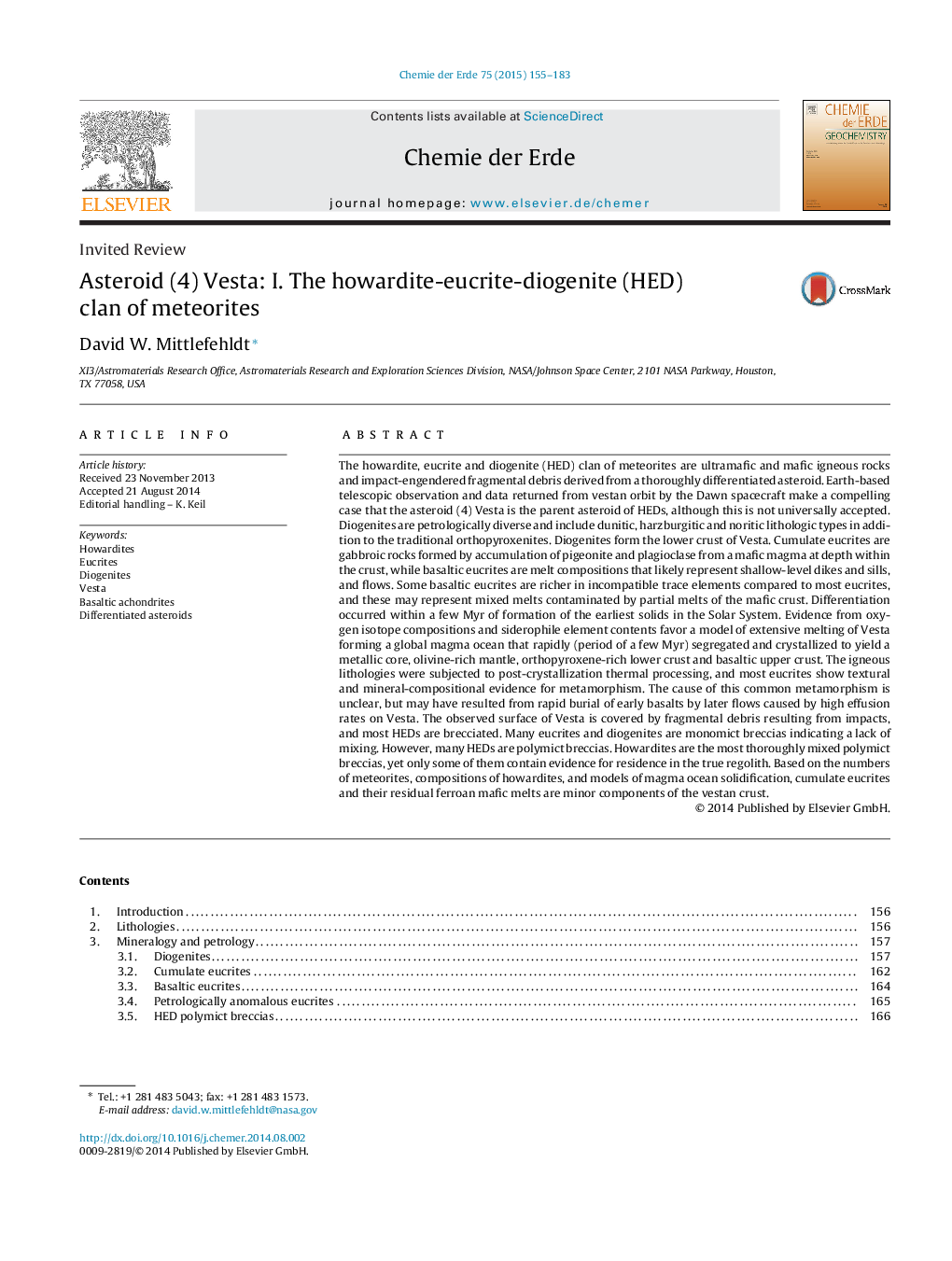| کد مقاله | کد نشریه | سال انتشار | مقاله انگلیسی | نسخه تمام متن |
|---|---|---|---|---|
| 4406874 | 1307328 | 2015 | 29 صفحه PDF | دانلود رایگان |

The howardite, eucrite and diogenite (HED) clan of meteorites are ultramafic and mafic igneous rocks and impact-engendered fragmental debris derived from a thoroughly differentiated asteroid. Earth-based telescopic observation and data returned from vestan orbit by the Dawn spacecraft make a compelling case that the asteroid (4) Vesta is the parent asteroid of HEDs, although this is not universally accepted. Diogenites are petrologically diverse and include dunitic, harzburgitic and noritic lithologic types in addition to the traditional orthopyroxenites. Diogenites form the lower crust of Vesta. Cumulate eucrites are gabbroic rocks formed by accumulation of pigeonite and plagioclase from a mafic magma at depth within the crust, while basaltic eucrites are melt compositions that likely represent shallow-level dikes and sills, and flows. Some basaltic eucrites are richer in incompatible trace elements compared to most eucrites, and these may represent mixed melts contaminated by partial melts of the mafic crust. Differentiation occurred within a few Myr of formation of the earliest solids in the Solar System. Evidence from oxygen isotope compositions and siderophile element contents favor a model of extensive melting of Vesta forming a global magma ocean that rapidly (period of a few Myr) segregated and crystallized to yield a metallic core, olivine-rich mantle, orthopyroxene-rich lower crust and basaltic upper crust. The igneous lithologies were subjected to post-crystallization thermal processing, and most eucrites show textural and mineral-compositional evidence for metamorphism. The cause of this common metamorphism is unclear, but may have resulted from rapid burial of early basalts by later flows caused by high effusion rates on Vesta. The observed surface of Vesta is covered by fragmental debris resulting from impacts, and most HEDs are brecciated. Many eucrites and diogenites are monomict breccias indicating a lack of mixing. However, many HEDs are polymict breccias. Howardites are the most thoroughly mixed polymict breccias, yet only some of them contain evidence for residence in the true regolith. Based on the numbers of meteorites, compositions of howardites, and models of magma ocean solidification, cumulate eucrites and their residual ferroan mafic melts are minor components of the vestan crust.
Journal: Chemie der Erde - Geochemistry - Volume 75, Issue 2, June 2015, Pages 155–183